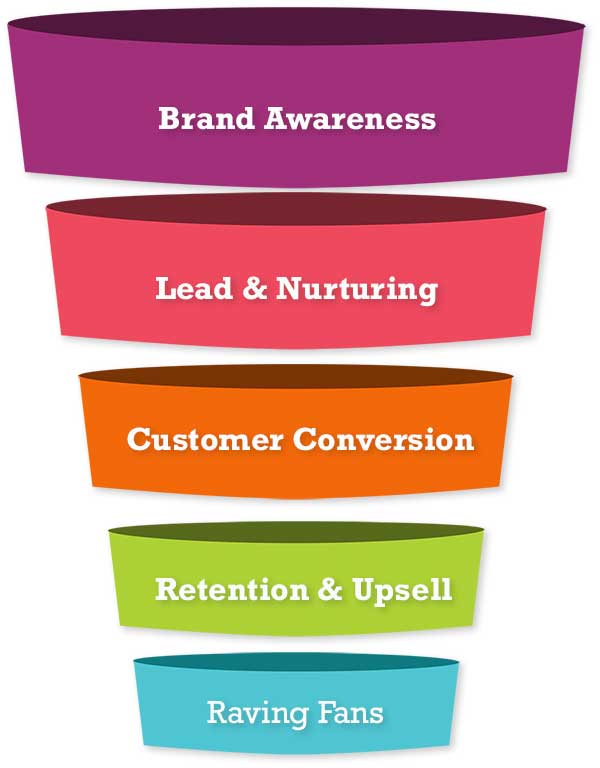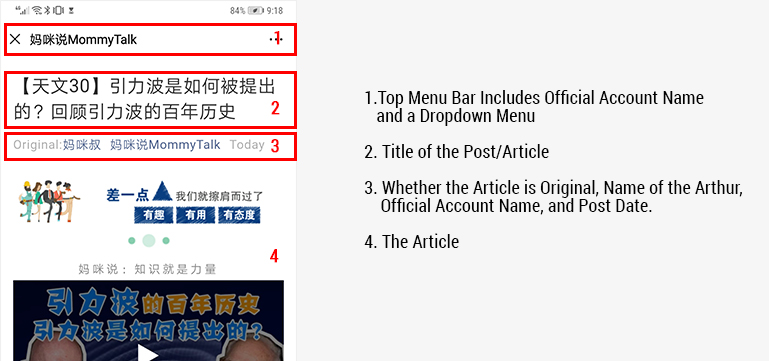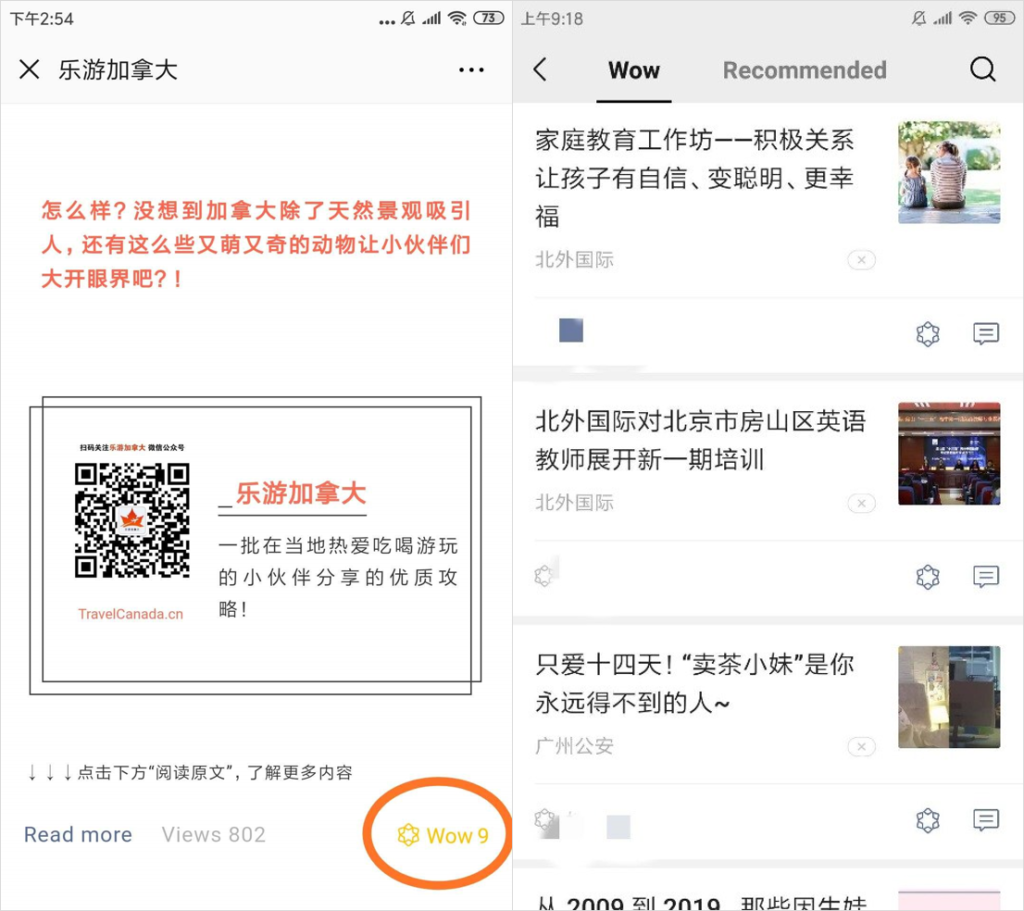How to Leverage Content Marketing On WeChat
Up till this chapter we’ve talked a lot of about the fundamentals of WeChat, you know… what it is, how Chinese consumers use WeChat in China and the importance of using WeChat official accounts.
But this chapter we’re going to dive deep and talk about one of my favorite topic which is leveraging content marketing on WeChat. While there are many different ways you can leverage WeChat to market and grow your business, it is in my opinion content is at the heart of all WeChat marketing.
There is just something about WeChat and content that just works really well together, especially with official accounts but the problem is after having been able to help dozens and dozens of international all brands from small to giants, most business just don’t get it.
They know that content is important but they don’t really understand how content marketing actually works. Here, I’m going to cover some core strategies and how to properly leverage content on WeChat to drive real measurable results for your business whatever your KPI may be.
So, let’s get started…
History of Content Marketing
With the explosion of the internet, the content market has become this buzz world that business and marketers like to use but in reality, content in marketing has been around for decades. Individuals and brands have been using contents as part of their marketing since the 1700s and maybe even before that.
Benjamin Franklin, one of the founding fathers of the United States; published “Poor Richard’s Almanack” in 1732 to promote his printing business. John Deere an American based company that manufactures agricultural machinery created the “Furrow Magazine” in 1895. The magazine was created to give farmers an accurate, unbiased source of information to improve their operations. Till this day, Furrow Magazine remains to be one of the most beloved magazines for farmers in North America.
But of course, the story doesn’t just end there. Procter & Gamble coined the term “Soap Operas” by producing the first radio serial dramas in the 1930s. The purpose of these serial dramas is to entertain housewives after a long day of hard work.
Blend Tec created “Will It Blend?” video series on Youtube in 2006. In 2014, “The Lego Movie’ a full feature-length film was released worldwide, on and on and on… I’m not going to cover everything here and there is a lot. If you’re interested in a complete history of content marketing, check out the great infographic by Content Marketing Institute.
Ok… so, we’ve made the point that the idea of “content marketing” is nothing new. But why is it that it has become this buzz word recently?
Well, in short; the internet happened.
The Problem with Content Market Today in China
Prior to the internet, in order for a business, brand, or marketer to reach an audience they had to go through the gatekeepers. These were the traditional publishing companies like newspapers, magazines, radio, and Television.
But with the advent of the Internet, everything changed.
Suddenly, even a 13-year-old kid from London, Ontario Canada can create content, get discover, and launch a career of international stardom (in case you’re wondering I was referring to Justin Bieber). This was simply not possible before the Internet.
Businesses and brands no longer have to go through a third-party publisher to reach their audience. For the first time, everyone can create contents and distribute them to billions of people around the world with the click of a button.
And for the first time, contents have become abundant, easily accessible, and an amazing way to connect and build a relationship with your customer.
But this is a double edge sword.
One of the misconceptions of content marketing today is that the creation of content has been democratized and that creating content is easier than ever before.
Of course, this isn’t entirely true. The creation of any content has always been democratized as anyone can create content they like but the creation of great original content that has intrinsic value isn’t any easier today than 20 or 1,000 years ago.
It still requires specialized talent, effort, time and creativity to focus on creating valuable quality content. What has been democratized by the invent of the internet and “social media” is the distribution of content.
What used to take millions of dollars and a lot of resources to distribute has become nearly free.
I can’t remember who said it, I think it’s Alexis Ohanian, the co-founder of Reddit…
“For centuries, the invention was limited to those who have access to means of production and access to labor. Today, you can simply create and present or distribute your ideas online. Granted if it’s that easy for you, it’s that easy for everyone.”
And this is the problem with content marketing today and especially on WeChat and in China! But the good news is, while almost anyone can create content today it is actually getting harder and harder to find someone who knows how to properly leverage content that actually delivers results which is what I’m about to show you in this chapter.
Benefits of WeChat Content Marketing
By the time you finish this entire WeChat Marketing Guide, you’ll know many ways you can leverage WeChat as a pillar of your marketing in China but like I said previously that there is something magic when you mix WeChat and content marketing together if done properly.
WeChat content marketing can:
- Increase your brand exposure in China.
- Increase engagement with your current and potential customers.
- Build trust and brand loyalty.
- Develop raving fans of your brands.
- Increase referrals and word of mouth marketing.
- Establish thought leadership positioning.
All, of these benefits and more, are possible with the right WeChat content marketing strategy which brings me to my next point and that is to Create Purpose-Driven WeChat Contents.
Crafting Your WeChat Content Strategy
By now you probably know that I don’t like the idea of creating content for content sake. Rather, I believe great content marketing are the purpose, strategy, and results-driven.
What are purpose-driven contents you may ask?
Well… it’s simple really.
It is creating content that elicits a certain outcome or KPI and by KPI I don’t mean just business KPIs such as revenue, sales or profit although they are definitely part of the equation you should never measure every piece of your content with the exact same KPI. (more on measuring and setting KPIs later)
The point is, most businesses create content because their competitors are doing it and they simply want to outdo them with the similar contents with absolutely no thought, no strategy and no real reason other than they believe they need to create contents and that their competitors are doing it.
But that’s just a big waste of time, resources and money.
If you cannot clearly define the purpose or reason why you’re creating a piece of content then don’t create it. Every piece of content should serve a purpose in a more overarching content strategy that supports your business in some shape, form or way.
Creating Content to Support Your Customer Journey
Just how an average customer will experience your brand through a journey, your content marketing should either be supporting a particular stage in the journey or move people down to the next stage of your customer journey.
One thing I want to mention however, here I’m outlining the typical 5 stages of an average customer journey, your actual customer journey may be different than what I’m going to outline here.
You may also want to keep in mind that customers do not go through the “customer journey” the exact same way for every single product or services.

For example, when “Dollar Shave Club” first launched it drives all of its awareness and conversion with just one piece of video content. It’s extremely well made and very unique at the time, so it really well.
On the other hand, if you’re a long B2B business and you sell to big corporations then you’ll definitely need to have different types of content for every stage of your customer journey. Just user this chapter as a starting make your own judgment call as to how you craft your WeChat content strategy.
Brand Awareness
Regardless of what industry you’re in what you sell whether it’s a product or service or whether you’re selling to another business or end-users you’ll need to drive brand awareness and engagement.
Now, this is usually the stage most business and market focus on with their content marketing. The goal of this stage is just to get people to know that your brand exists and let them know what problem you’re solving for them.
The type of content you would want to create is generally value-driving, it should be either useful or entertaining. There are 3 ways you can approach your content strategy at this stage which is you can either create consistently a lot of mediocre content over a long period of time, create high-quality viral content that people will share, or do a mixture of both.
Types of Content to Create for This Stage
- General Educational Contents
- Entertainment Contents
- Engaging Content
- Industry News & Trends
- Though Provoking Contents
- Product Demonstration Videos
First Contact (Lead Generation)
If you’re a Star Trek fan, during the movie “First Contact” when Cochrane made his first warp flight, it attracted the attention of the Vulcans to contact the human race. This event is ultimately what made the rest of the Star Trek universe possible.
Your content for this stage should be like the first warp flight. I’m not asking you to invent the warp drive (if you can please contact me), but your content should be intriguing enough for the user to want to take action for further engagement.
This action can vary… it can be as simple as a subscribe or follow, an exchange of their email, name, or phone number, or sign up for a demo. Once you have the user’s permission, you can now create content to guide them through your sales cycle.
Types of Content to Create for This Stage
- Educational Contents
- Entertainment Contents
- Engaging Content
- Good Well Building Content
- Courses and Tutorials
- Upcoming Events & Seminars
Customer Conversion
The conversion stage will widely vary depending on your product or service. Obviously, the goal of this stage is to ask for a sale. In some cases, this stage can be accomplished with case studies, testimonials, or a long-form sales letter. While in other cases, a phone call or a one on one meeting will be required to close the deal.
Types of Content to Create for This Stage
- Case Studies
- Brand Story
- Customer Testimonials
- Product Demonstration Videos
- Entertainment Contents
- Engaging Content
- Though Provoking Contents
- Celebrity Endorsements
- Objection Handling
Retention & Upsell
From here on are the stages that a lot of businesses ignores and never create content for, but in my opinion, these are also the most important stages in your customer’s journey. Just because you’ve finally succeeded in converting a lead into a paying customer or make a sale, it doesn’t mean your job is done.
Do you have any content to reinforce the customer’s buying decision? For example, Apple offers a free one-hour-long workshop to help its customer with the products. Now, we all know Steve Jobs is famous for making products simple for the customer but even as simple as Apple products are inevitable, you’ll have a customer that will run into troubles. Apple understood that they know that the sale doesn’t end at the checkout.
For you, this could content such as FAQs, a guide to help your customer get the most out of your product, examples of how other customers achieve success with your product or services, or industry insight reports. The goal of this stage is to continue to add value to your customers and reinforce that their decision to purchase your product or service is the right one.
Types of Content to Create for This Stage
- Product How to Contents
- Customer Success Stories
- New Product Introduction
- Special Promotions
- FAQS
- Entertainment Contents
- Engaging Content
- Educational Content
- Industry Insight Reports
Raving Fans
This is the pinnacle stage for any business or brand. During this stage, contents are not just created by you anymore, it’s created by your fans and brand evangelists. Now, I’m going to be honest, to move customers to this stage is very hard! And it is easier for certain industry than others.
In particular, creative base companies will naturally have raving fans for some of their products. I’m talking about movies, music, and video games. But if you really think about it, their products are contents. Fans of these products will create fan sites, write a review, and evangelize about the brand.
Types of Content to Create for This Stage
- Fan Generated Content
- Create Tools that Allows Your Raving to Create Content For You Easier
- Special Rewards and Gifts to Thank Your Fans
- Birthday and Holiday Cards, etc…
Understanding the Anatomy of WeChat Articles
Let’s talk about how WeChat articles are sort of structure and layout because it matters when it comes to getting users to engage with your content.
First, a typical WeChat article is more of a blog post rather than a social post. On the very top, you’ll have the close button, followed by the name of the official account and the options menu for sharing, etc..
Right after the top bar, you’ll have the title of the article followed by the meta information of the article such as the author name, the post date, whether the article is original or shared from another WeChat official account and finally the name of the account again.

From here on, the article really begins and how it is structure will vary from Arthur to another. At the very end of the article, depending on the account there will usually be a bio, a bunch of QR, and banner ad. After all of that, you finally get to the View Counts, “WoW” button, and then comments.
So really, it’s like your typical blog post but on WeChat. However, unlike your average blog post, which is designed, layout and structure by your website developer, you’ve no control over the structure of a WeChat article. It is the way it is. This means that even if you want to add a WoW button on the very top of the article you cannot.
But why is all of this important?
It is important because in order for a user to WoW and comment on your article they will have to either actually read the entire article or scroll all the way down. Whereas on Facebook, Instagram and other social media the user can just like, share and comment on the post without having to actually read the whole thing.
This means if you want people to engage with your content on WeChat you’ll either have to be a damn good writer that can keep people entice and engaged if you have a very long article or write very useful or entertain short articles so people can get to the WoW and comment section of the article.
The New WoW Button if Your Best Friend
For those of you who are not familiar with the New Button. A little over a few months ago WeChat officially replaced the “Like” button at the end of every article to a “WoW” button instead and the only difference between the two other than the “text” is that whenever someone WoW your article, all their friends on their WeChat friend list will have your article appeared in their WoW articles lists under the Top Story tab.

This means that the more people you can get to “WoW” your article the more likely it will get discovered by people who may not be following your account yet and the more likely it will be shared on their moments, thus increasing view counts and potentially even go viral.
Setting & Measuring KPIs For Your WeChat Content Strategies
I was once told that If you can’t measure the results of your marketing then you’re just gambling. This is absolutely true, if you can’t measure your marketing then you cannot set KPIs and you cannot make improvement because you don’t know if what you’re doing is working or not working.
Too often do we create content for the sake of creating content and never measure and set realistic KPIs to track the performance. This is because like I said again and again even the best of us, myself included make the mistake of creating content for the sake of creating content.
To properly set and measure KPIs for your content you must first know what the purpose of all the contents you create because each content will serve a very different purpose and thus, they should be measured differently.
For Awareness Contents, you would typically set your KPIs on WeChat as views, likes, shares, subscribes and engagements (comments).
For Conversion Contents, you should set your KPIs to sales, booked appointments, phone calls, or subscribers.
This is typically how you would set and measure KPIs with your WeChat articles, the contents you create to increase brand loyalty (retention) can be a lot more trickery to measure because KPIs such as repeat purchases, referrals, and retention are usually only going to measure able bi-annually or annually.
Important Note: Some KPIs may be a lot harder to measure on WeChat due to the limited data you’ll see on the back end. You can leverage a third-party app to increase the number of data you get from WeChat such links clicked in articles, menu interaction.
Next chapter